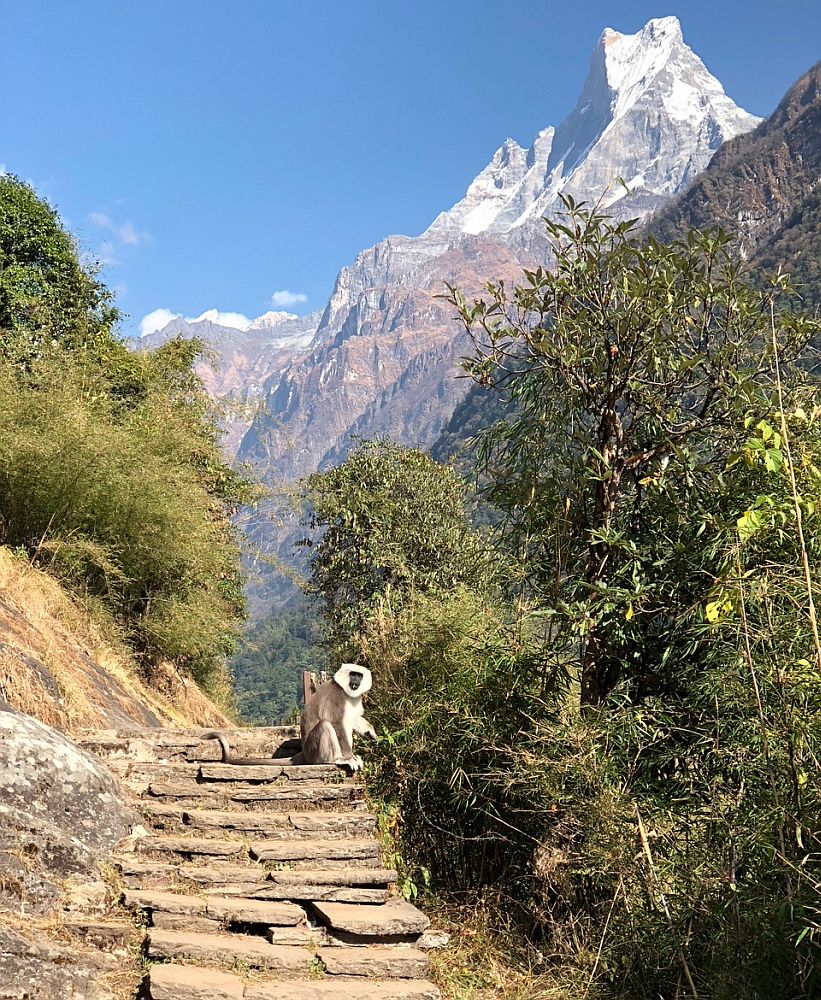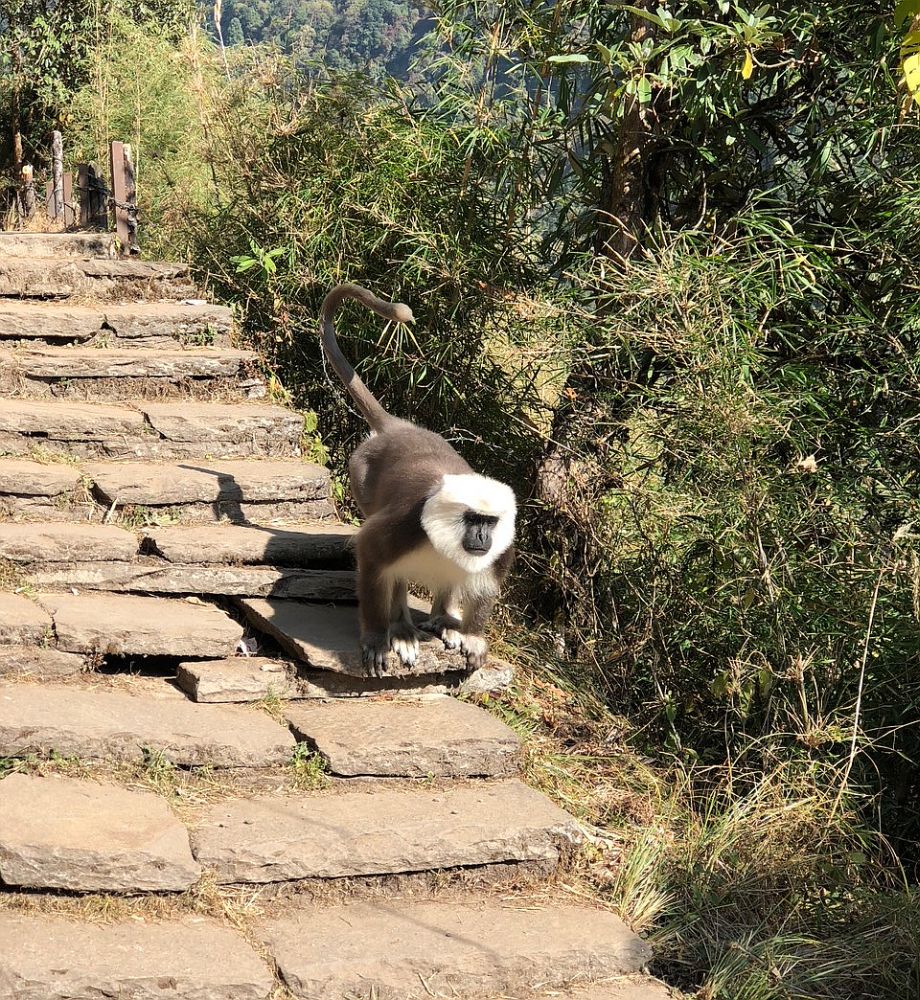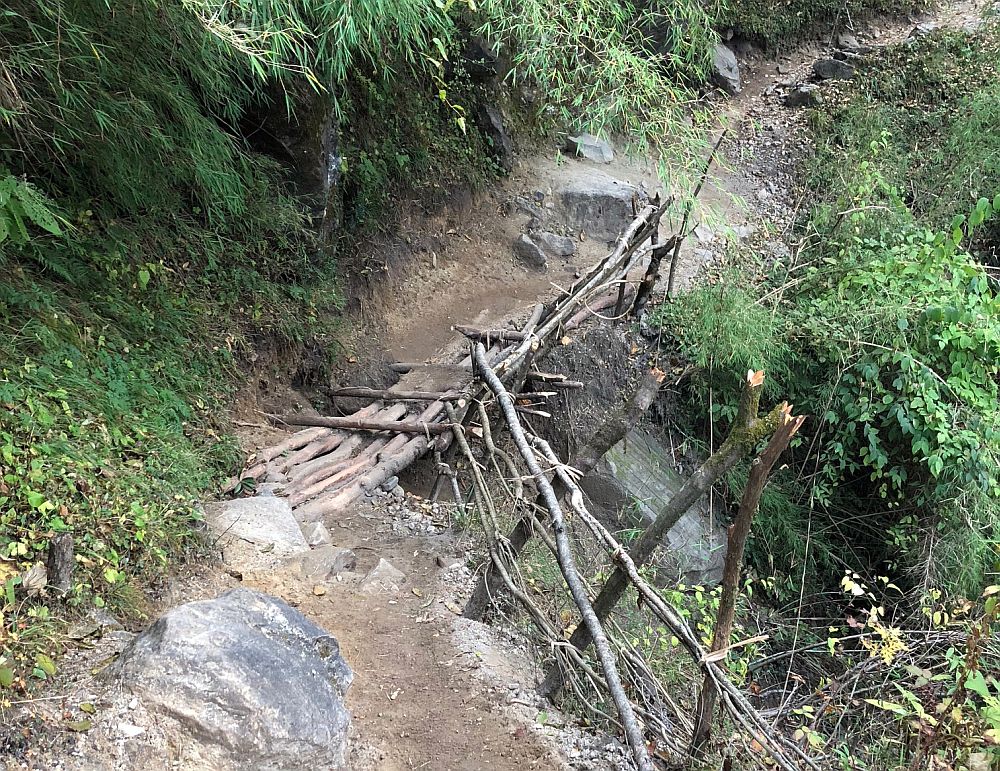Is This Safe?
“You’re hiking alone? No guide or porter? Good lord, is that safe?!” Imagine this in a Scottish accent, being spoken out of concern by a woman nearing my mom’s age. In fact, these are words my mom has thought and spoken aloud, minus the accent.
My answer without pause is yes, it’s safe. I feel no risk of personal safety from theft or assault, from marauding animals or political vigilantes. “It’s totally safe here!” I have declared repeatedly. And it is. But that feeling of safety comes not only from helpful strangers looking out for each other, but also from knowing and mitigating the risks that do exist.
Altitude sickness
"You have altitude sickness until proven otherwise."
"Many in the burgeoning adventure travel industry are clueless about mountain sickness," the Himalayan Rescue Association writes on its web site. This is no joke. AMS (Acute Mountain Sickness), HACE (High Altitude Cerebral Edema) and HAPE (High Altitude Pulmonary Edema) are problems that everyone trekking in the Himalaya needs to understand and be ready to diagnose – in themselves and in others. Symptoms like breathlessness and headache are pretty normal to experience at high altitude, but they can progress to something much worse, including coma and death. Knowledge is key here, and so is a willingness to curb your ego and cut your trek short. Spend a day hiking at altitude in Everest or Annapurna and you will 1) feel the effect on your breathing and perceived physical exertion, and 2) see rescue helicopters coming and going across the sky.
Injury
My first aid and medical kit was overstuffed with useful bandages, tape and medicine, most of which I never needed but freely doled out to other trekkers. Again, I think preparation ensured that the supplies would largely go unused. There was one day, though, when I literally fell on my face. My legs were tired, my mind was tired, and when I tripped on a rock my nose and forehead broke my fall. Stunned but lucid, I pulled myself into a seated position and felt my face. There was a little bit of blood on the bridge of my nose, but not a lot. A half-hour later, I got to a teahouse and used their outdoor spigot to clean myself up. My face was streaked with dirt and the scrapes on my nose and forehead were noticeable but not terrible. I opened the med kit and found antiseptic wipes, Neosporin and Band-Aids and did an admirable job bandaging myself up, then kept walking walking for another hour before ending the day at sunset. Moral of the story, even when you fall on your face, remember that the damage could be far, far worse.
About dangerous animals…
In six weeks of trekking, I had exactly one encounter with an animal that had me worried. I mostly restrained myself from playing with adorable but filthy stray dogs and cats, I never saw snakes or menacing insects and the legendary snow leopard did not wander near. But one afternoon, alone on a trail, I looked up to find myself nearly face-to-face with a black-faced langur. I stopped short and took in the monkey-like animal 15 feet ahead of me. He sat still right in the center of the trail, and then continued grabbing at leaves with his long-fingered paws. I stood still, too, took pictures and wondered, how is this going to end? The langur started toward me, my perception of his size and strength growing exponentially as he came nearer. I wasn’t sure if I should move aside (would that indicate weakness and encourage him to pounce?) or try to scare him away (and thus provoke a fight?) but in the seconds I had to consider my options, he ran-hopped-lurched toward me and then past me, as eager as I was to create distance between us. After that, I made an effort to whistle and sing occasionally, to ward off any unsuspecting primates on the trail.


Trail conditions
Read through the descriptions of trekking routes and study the maps, and certain phrases will jump out at you. Phrases like, "landslide," "avalanche" and "Warning - Unstable Scree Slopes." What made me increasingly hesitant the longer I trekked wasn't the trail itself but the frequent bridges. The aluminum suspension bridges were solid, no problem there. (I mean, if a team of yaks can cross it, surely one more tourist won't be the breaking point.) But I encountered plenty of streams and eroded sections of trail that were spanned with logs and rocks in a manner that did not always inspire confidence. Usually, the only way out was through, so I learned to trust the trail but to step carefully.



Random stuff
Light 'em up!
Every day, I encounter things that would send US regulators into a frenzy of preventative rule-writing. For instance, in nearly every guesthouse, the doors have slide locks on both the inside and the outside, so you could -- if you wanted to -- easily lock someone inside their room without a method of escape. Another example: at one chilly guesthouse, the owner lit a metal bucket of coals on fire and placed it under the wooden table we were eating at, to keep our feet warm. (Nothing went up in flames, and it was fantastically warm, but.....). Guardrails are nonexistent on roads that cling to the sides of cliffs, though occasionally there are large blocks of rock that help set a barrier. My first car ride in the frenetic streets of Kathmandu, when I was encouraged to take the front seat, I asked if there was a seat belt. "Welcome to Nepal!" the guy shrugged and smiled, as if that answered the question.
***
Perceptions of safety can often be confused with familiarity. I'm reminded of a friend who lives in the country and who says she always feel safer in the woods than in a big city. I think most city people would feel vulnerable if they were cast out into the rural woods, and they feel safer amidst buildings and businesses and people. We operate with confidence in environments that we know; but just because you're in a new or foreign place, doesn't mean the experience is inherently unsafe or risky, and preparation and acquired knowledge makes it all the safer.


